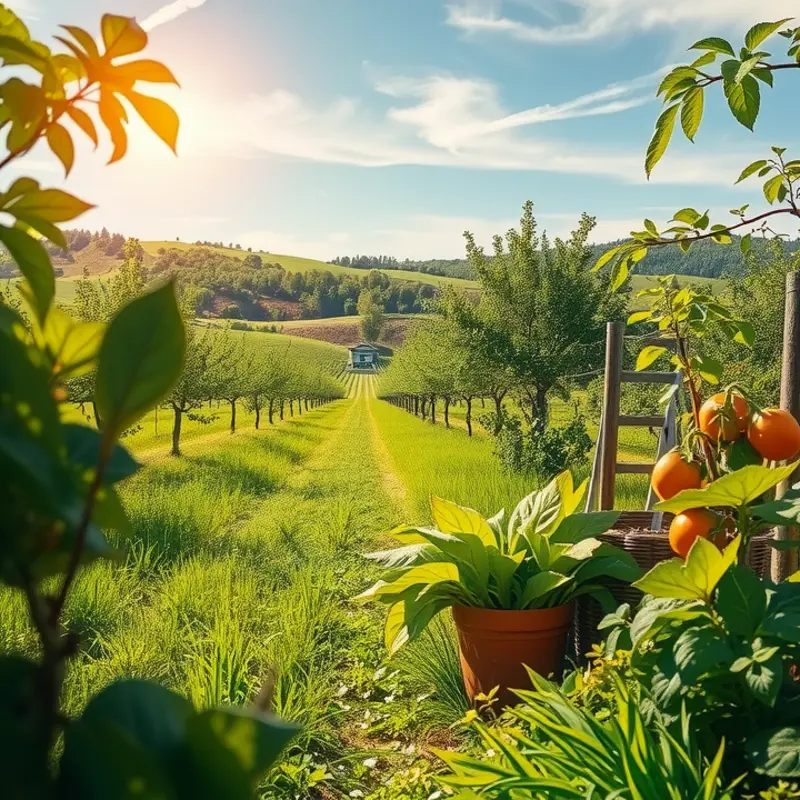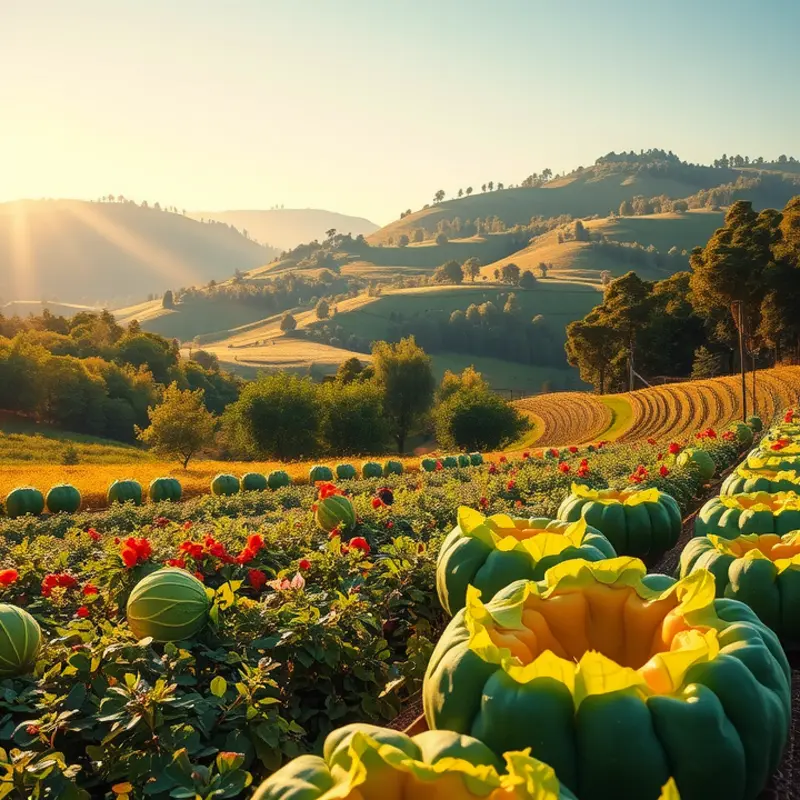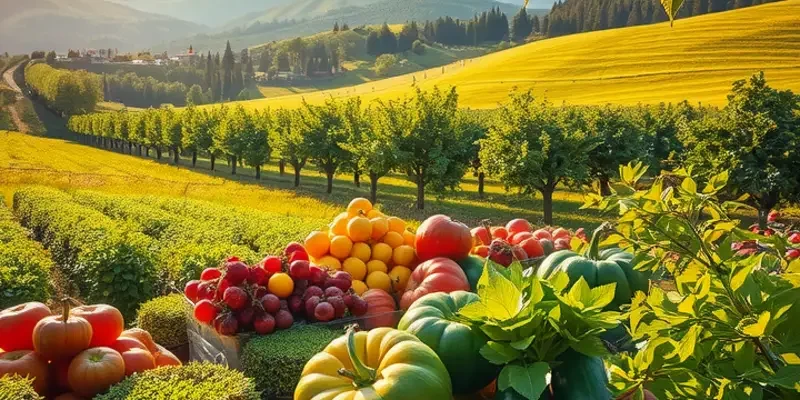Choosing food that supports biodiversity not only benefits the planet but also enhances personal health. As environmentally-conscious individuals, making informed food choices can create a ripple effect that promotes ecological balance, community resilience, and a sustainable future. From selecting local produce to embracing diverse diets, individuals can contribute to the environment through everyday food decisions. Explore effective strategies to nourish yourself while nurturing the earth.
Embracing Local and Seasonal Produce

Choosing local and seasonal fruits and vegetables is a powerful way to support local ecosystems while reducing your carbon footprint. By selecting produce grown nearby, you ensure fewer transportation miles and decrease the pollution associated with shipping foods across long distances. This choice also helps preserve the unique biodiversity of your local area by encouraging the growth of native plants, which support local wildlife and pollinators.
Purchasing local produce also empowers small farms, allowing these farmers to sustain their practices. This support helps keep diverse farmland viable, as opposed to giving way to monoculture farming that can degrade soil and reduce biodiversity. Seasonal produce, being harvested at its peak, offers unparalleled flavor and nutrient density. This ensures that your meals are not only environmentally friendly but also delicious and healthful.
To incorporate local and seasonal produce into your daily meals, start by familiarizing yourself with a seasonal produce calendar specific to your region. This calendar will guide you to know what fruits and vegetables are at their peak at different times of the year. Visit farmers’ markets to find the freshest and most seasonally appropriate produce available. Engage with local farmers, asking for their recommendations and tips on how to best prepare the items they offer.
Consider joining a community-supported agriculture (CSA) program. CSAs provide a regular share of local farm produce, which varies with each harvest. This not only expands your culinary horizons but also directly supports local agriculture. If you’re not sure how to use some of the more unfamiliar produce, exploring new recipes can be a fun way to diversify your meals.
For those unable to visit local markets frequently, many grocers are now highlighting local produce sections. These are often clearly marked, making it easier to make environmentally conscious choices even during a conventional grocery run. Additionally, urban dwellers can grow herbs or small vegetables in container gardens, which not only supplements meals but also engages with local biodiversity firsthand.
Planning meals around seasonal produce can also reduce food waste, aligning well with practices of low-waste cooking and preparation. For tips on reducing waste in the kitchen, explore our guide here. By creatively using all parts of the produce and storing them properly, you can fully appreciate the bounty of each season without unnecessary waste.
Integrating local and seasonal produce into your diet provides benefits beyond individual health. It supports local economies, maintains biodiversity, and reduces ecological impact. Each small choice resonates in the larger scheme, contributing to a more sustainable and delicious food future.
Diversity on Your Plate: The Power of Plant-Based Diets

A plant-based diet is more than a personal health choice; it’s a powerful tool for promoting biodiversity. By eating a wide variety of fruits, vegetables, and whole grains, we can support diverse agricultural practices that strengthen ecosystems. Large-scale monoculture farming depletes soil nutrients, reduces habitat variety, and ultimately weakens biodiversity. In contrast, cultivating a wide array of crops enriches the soil and promotes a more balanced ecosystem.
Choosing plant-based foods doesn’t just impact the environment; it enhances nutritional intake. Plants pack vitamins, minerals, fiber, and antioxidants into each bite, reducing the risk of chronic illnesses. Eating different plant varieties exposes you to a range of phytonutrients that improve overall health.
Transitioning to a plant-forward diet doesn’t mean eliminating all other food groups immediately. Start by incorporating more plant-based meals and expand your palette with new ingredients. Consider these tips for an easier transition:
- Experiment with one new vegetable each week. Try versatile options like kale or sweet potatoes.
- Replace refined grains with whole grains such as quinoa, brown rice, or barley.
- Plan meals around fruits, vegetables, legumes, and nuts. Try a meat-free day to incorporate new recipes gradually.
Start your day with a hearty breakfast bowl. Combine oats, chia seeds, almond milk, and top with fresh berries and nuts. For dinner, explore diverse grains like farro or sorghum as a base for colorful stir-fries or salads.
Community-supported agriculture (CSA) is an excellent way to access a variety of seasonal produce. Joining a CSA supports local farmers and gets you fresh, sustainable food straight from the source. You not only enjoy the flavors of in-season crops but also contribute to a more resilient food system.
For those eager to delve into plant-based meal planning, check out resources for easy plant-based eating. This informative guide provides practical advice and recipes to make your transition seamless.
By diversifying the contents of your plate, you take an active role in fostering a healthier planet. Celebrate the potential of a plant-powered lifestyle by embracing the flavors and nutrients it offers. Each meal becomes an opportunity to support a more sustainable and biodiverse future.
Final words
Supporting biodiversity through food is an empowering journey. By prioritizing local and seasonal produce and embracing a diverse, plant-based diet, we can foster a healthier planet and enhance our own well-being. Small, consistent changes in our eating habits can lead to significant impacts on the environment. Every step taken to make eco-friendly food choices contributes to the preservation of nature’s rich tapestry. Together, let’s cultivate a food culture that respects the earth and thrives in harmony with its ecosystems.








